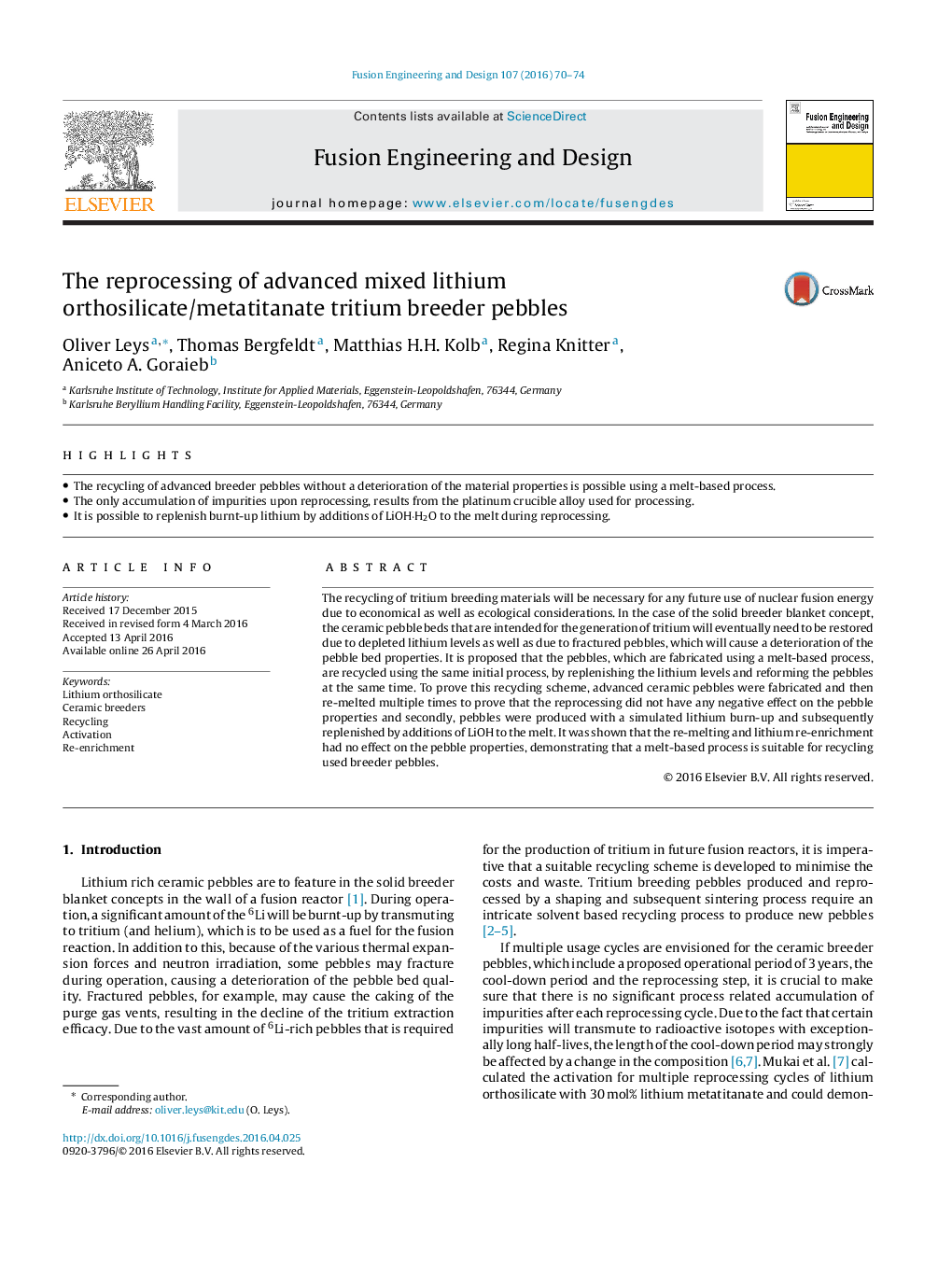| Article ID | Journal | Published Year | Pages | File Type |
|---|---|---|---|---|
| 270863 | Fusion Engineering and Design | 2016 | 5 Pages |
•The recycling of advanced breeder pebbles without a deterioration of the material properties is possible using a melt-based process.•The only accumulation of impurities upon reprocessing, results from the platinum crucible alloy used for processing.•It is possible to replenish burnt-up lithium by additions of LiOH·H2O to the melt during reprocessing.
The recycling of tritium breeding materials will be necessary for any future use of nuclear fusion energy due to economical as well as ecological considerations. In the case of the solid breeder blanket concept, the ceramic pebble beds that are intended for the generation of tritium will eventually need to be restored due to depleted lithium levels as well as due to fractured pebbles, which will cause a deterioration of the pebble bed properties. It is proposed that the pebbles, which are fabricated using a melt-based process, are recycled using the same initial process, by replenishing the lithium levels and reforming the pebbles at the same time. To prove this recycling scheme, advanced ceramic pebbles were fabricated and then re-melted multiple times to prove that the reprocessing did not have any negative effect on the pebble properties and secondly, pebbles were produced with a simulated lithium burn-up and subsequently replenished by additions of LiOH to the melt. It was shown that the re-melting and lithium re-enrichment had no effect on the pebble properties, demonstrating that a melt-based process is suitable for recycling used breeder pebbles.
